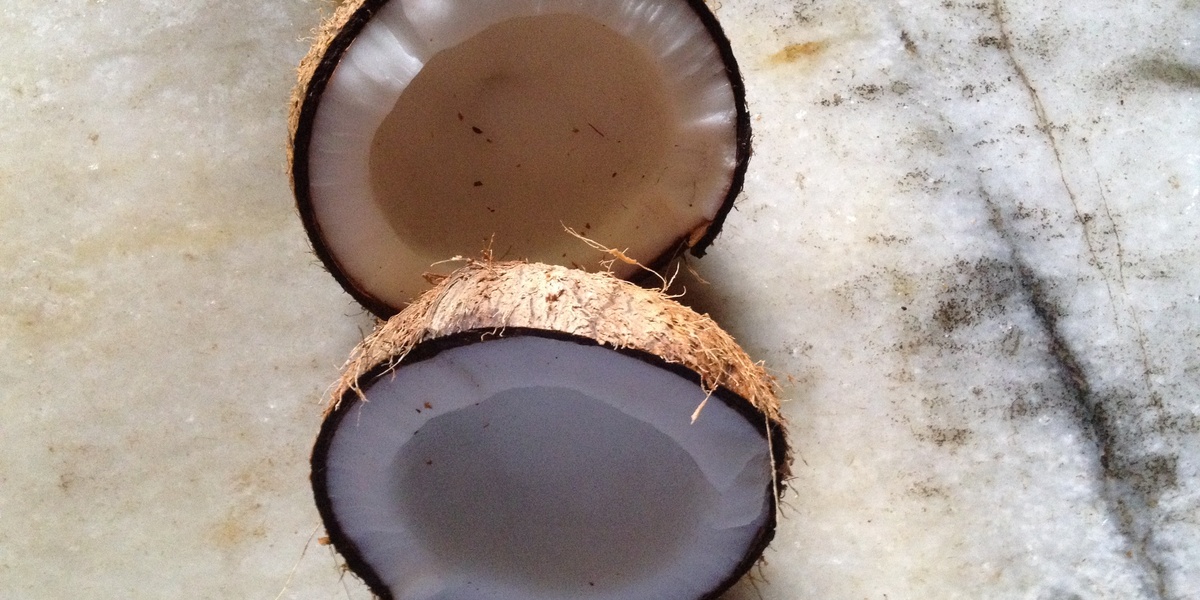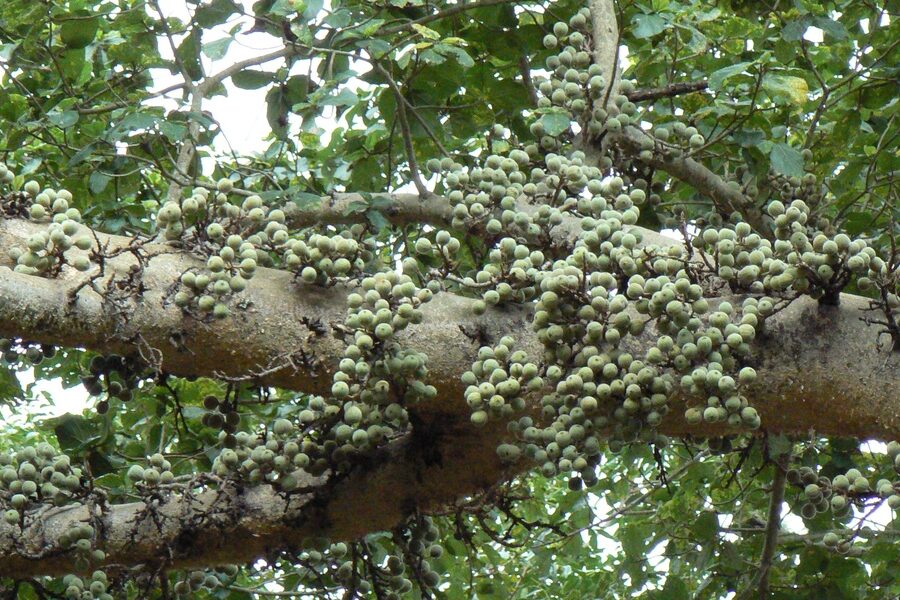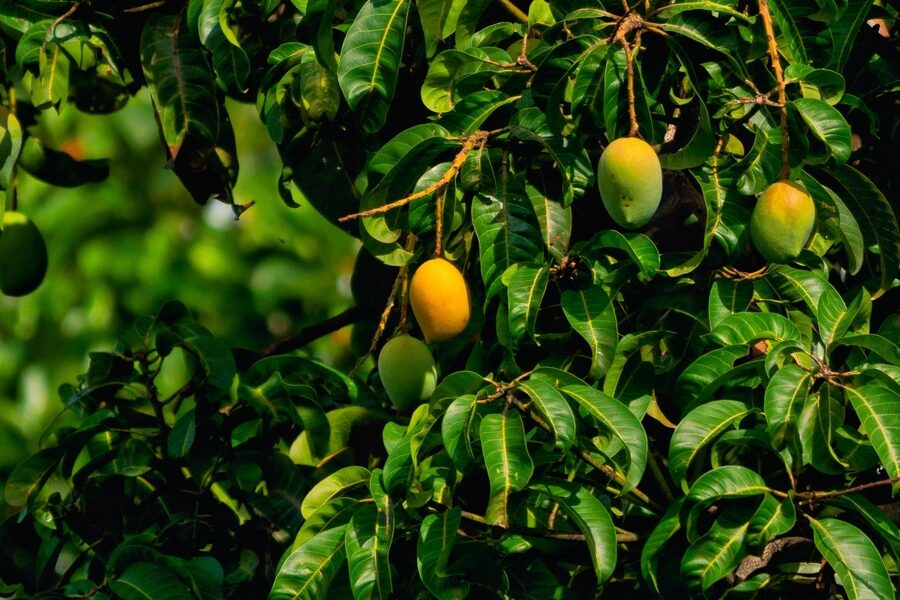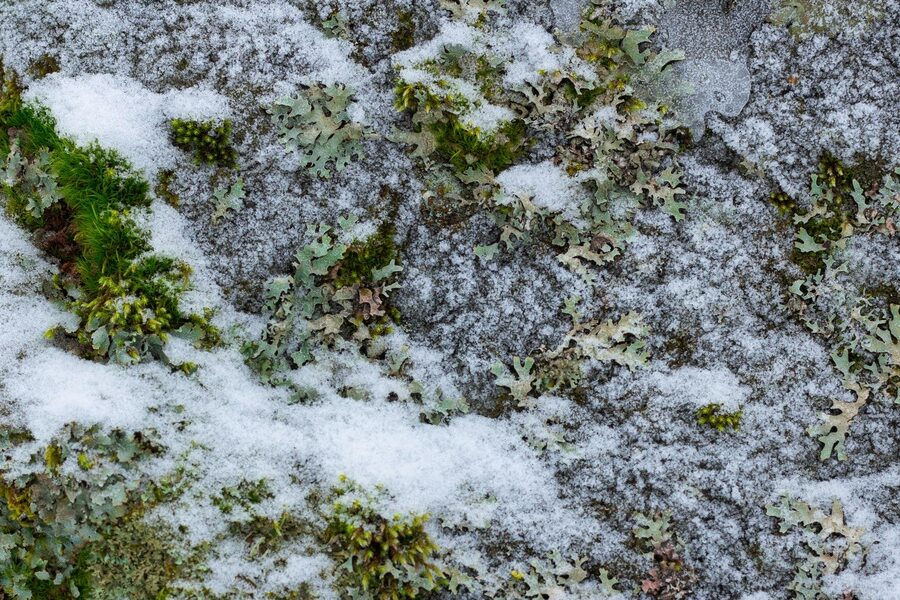From coastal markets to backyard orchards, pale-hued produce pops up in cuisines and gardens around the world. These subtly colored fruits can be surprising in texture and flavor, and they’re worth a closer look whether you’re shopping, cooking, or planning a planting.
There are 22 white fruits, ranging from Apple to White sapote. For each entry you’ll find below Scientific name,Color (flesh/skin),Native region to make comparisons easy and quick — you’ll find below complete details for every item on the list.
How do white fruits differ nutritionally from more colorful fruits?
White fruits often contain different mixes of phytonutrients than brightly colored varieties; they can be high in fiber, potassium, and compounds like flavonols and allicin-related substances, but may have lower levels of pigments like anthocyanins. Check the Scientific name,Color (flesh/skin),Native region entries for specifics that affect sugar, fiber, and micronutrient profiles.
Are white fruits versatile in cooking and storage?
Yes — many white fruits handle cooking, baking, and preserving well, though textures vary: firmer ones hold up to roasting and grilling, while softer types are best for sauces and purees. Use the Color (flesh/skin) and native-region notes below to judge ripeness, flavor pairing, and storage needs.
White Fruits
| Name | Scientific name | Color (flesh/skin) | Native region |
|---|---|---|---|
| Apple | Malus domestica | Flesh: predominantly white | Central Asia; cultivated worldwide |
| Asian pear | Pyrus pyrifolia | Flesh: predominantly white | East Asia; cultivated in temperate regions |
| Pear | Pyrus communis | Flesh: predominantly white | Native to Europe and Asia; grown worldwide |
| White peach | Prunus persica (white-fleshed group) | Flesh: predominantly white | Origin in China; widely cultivated temperate regions |
| White nectarine | Prunus persica var. nucipersica (white-fleshed) | Flesh: predominantly white | Origin China; grown in temperate regions |
| Dragon fruit | Hylocereus undatus | Flesh: predominantly white | Native to Central America; widely cultivated in Southeast Asia and tropical regions |
| Coconut | Cocos nucifera | Flesh: predominantly white | Tropical coastal regions worldwide |
| Cherimoya | Annona cherimola | Flesh: predominantly white | Native to Andean South America; grown in Mediterranean and subtropical regions |
| Atemoya | Annona × atemoya | Flesh: predominantly white | Hybrid of cherimoya and sugar apple; grown in tropical/subtropical regions |
| Sugar apple | Annona squamosa | Flesh: predominantly white | Native to tropical Americas; grown across tropics |
| Soursop | Annona muricata | Flesh: predominantly white | Native to tropical Americas; cultivated in tropics worldwide |
| Mangosteen | Garcinia mangostana | Flesh: predominantly white | Native to Southeast Asia; grown in tropical regions |
| Guava (white) | Psidium guajava | Flesh: predominantly white | Native to tropical Americas; cultivated worldwide in tropics and subtropics |
| White sapote | Casimiroa edulis | Flesh: predominantly white | Native to Mexico and Central America; cultivated in subtropical regions |
| Water apple | Syzygium samarangense | Flesh: predominantly white; Skin: often pale/white | Native to Southeast Asia; grown in tropics |
| White mulberry | Morus alba | Skin and flesh: predominantly white | Native to China; cultivated widely for silkworms and fruit |
| White currant | Ribes rubrum (white cultivars) | Skin and flesh: predominantly white | Native to Europe; cultivated in temperate gardens |
| Star apple (white pulp) | Chrysophyllum cainito (white-pulp types) | Flesh: predominantly white | Native to the Caribbean/Central America; cultivated in tropics |
| Breadfruit | Artocarpus altilis | Flesh: predominantly white | Native to Polynesia/SE Asia; cultivated in tropics |
| Marang | Artocarpus odoratissimus | Flesh: predominantly white | Native to Borneo and the Philippines; grown in Southeast Asia |
| Salak (snake fruit) | Salacca zalacca | Flesh: predominantly white | Native to Indonesia; cultivated in Southeast Asia |
| Jujube | Ziziphus jujuba | Flesh: predominantly white | Native to China; cultivated in Asia and worldwide |
Images and Descriptions
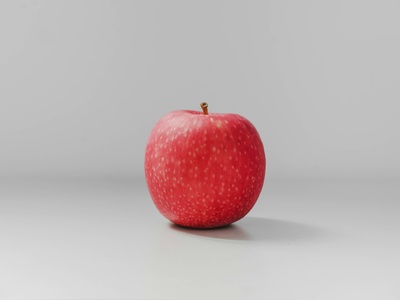
Apple
Common temperate fruit with crisp, predominantly white flesh and thin skin. Grown worldwide from Central Asia origins, apples are eaten fresh, baked, or made into sauces and cider. Varieties differ in sweetness and storage; widely used in cooking and nutrition.
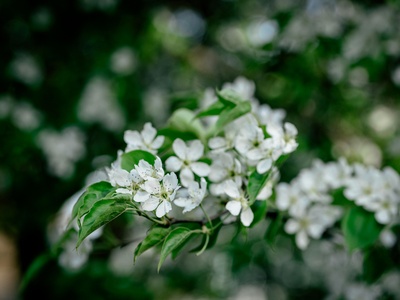
Asian pear
Crisp, round pear with juicy, predominantly white flesh and pale skin. Native to East Asia and grown in temperate orchards, it’s eaten fresh, poached, or in salads. Known for grainy texture, subtle sweetness, and excellent storage qualities.
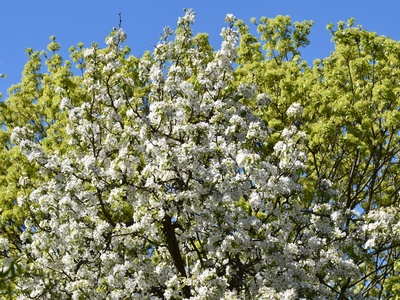
Pear
European pear offers soft, predominantly white flesh with thin skin; flavors range from sweet to buttery. Grown across temperate regions, it’s popular fresh, baked, or canned. Many culinary and storage varieties suit cooking, preserves, and fresh salads.
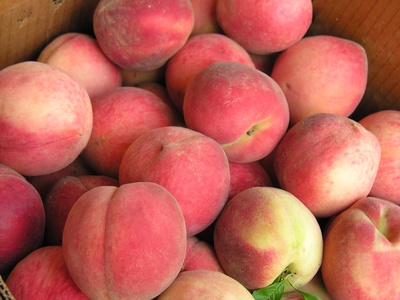
White peach
White-fleshed peaches have sweet, delicate flavor and pale white flesh beneath thin skin. Originating in China and grown globally, they’re prized for fresh eating, desserts, and preserves. Their lower acidity and fragrant aroma distinguish them from yellow peaches.
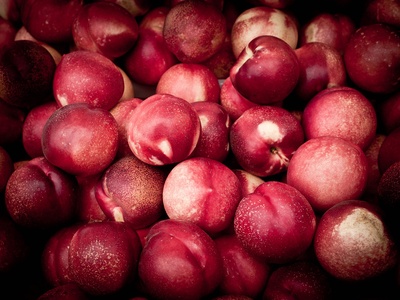
White nectarine
White nectarines combine smooth skin with pale white flesh and aromatic sweetness. Bred from peaches, they’re excellent fresh, grilled, or in tarts. Common in home orchards and markets across temperate climates, their gentle flavor suits many desserts and salads.
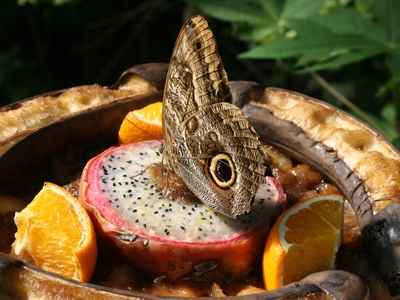
Dragon fruit
White-fleshed dragon fruit has strikingly pale interior speckled with tiny black seeds and mild sweet flavor. Originally Central American, it’s now grown across tropical Asia. Used fresh, in smoothies, or desserts, it’s visually attractive and hydrating.
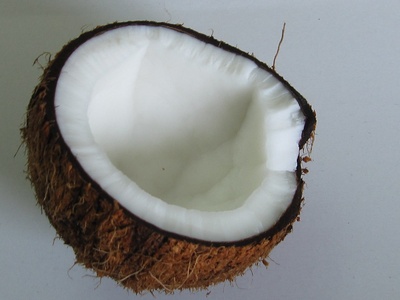
Coconut
Coconut produces thick, bright white kernel (flesh) inside a hard shell; widespread in tropical coasts. Used fresh, dried (copra), milk, and oil, it’s a staple in many cuisines and provides rich, slightly sweet flavor and versatile culinary uses.
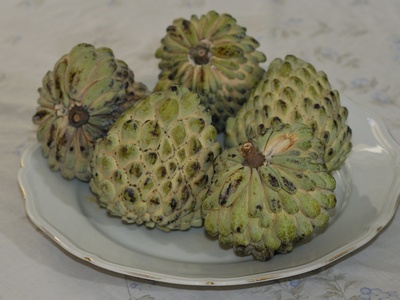
Cherimoya
Cherimoya has creamy, fragrant white flesh and custardy texture; native to the Andes and cultivated in Mediterranean and subtropical climates. Eaten fresh, in smoothies or desserts, it offers sweet tropical flavors and soft, seedy pockets.
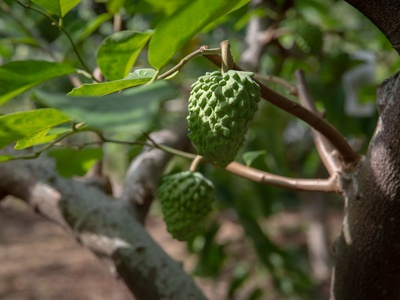
Atemoya
Atemoya, an Annona hybrid, combines creamy, predominantly white flesh with sweet tropical notes. Popular in subtropical orchards, it’s eaten fresh, frozen, or blended. The soft texture and perfumed aroma make it a dessert favorite where it’s cultivated.
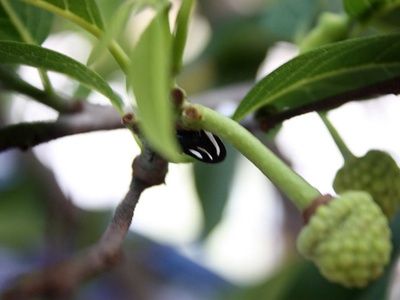
Sugar apple
Sugar apple has segmented green skin and sweet, soft white flesh that separates into custardy segments around inedible seeds. Widely grown in tropical Americas and Asia, it’s eaten fresh or chilled and used in desserts and beverages.
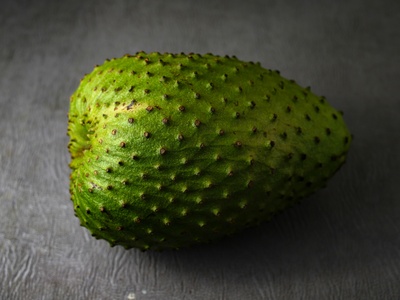
Soursop
Soursop features fibrous, fragrant white flesh with sweet-tart flavor and aromatic profile. Grown across tropical regions, it’s used in juices, ice creams, and traditional medicines. Large spiny fruit contains black seeds embedded in the soft pulp.
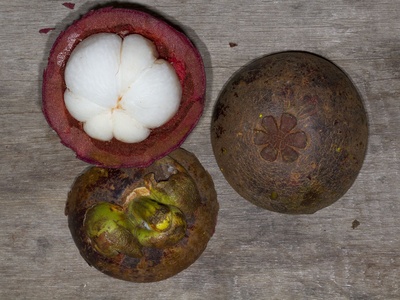
Mangosteen
Mangosteen bears segmented, fragrant white flesh with sweet-tart flavor inside a thick purple rind. Native to Southeast Asia and prized fresh or frozen, it’s celebrated for delicate texture and used in desserts and specialty cuisines.
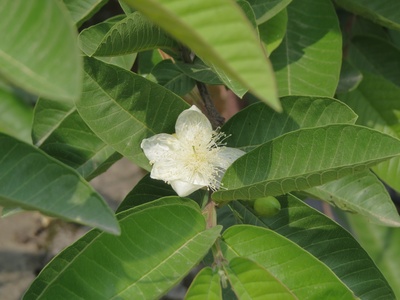
Guava (white)
White guava has crisp, fragrant white flesh with a sweet-tart flavor and numerous small seeds. Native to tropical Americas and extensively cultivated, it’s eaten raw, made into jams, juices, and desserts across tropical cuisines.
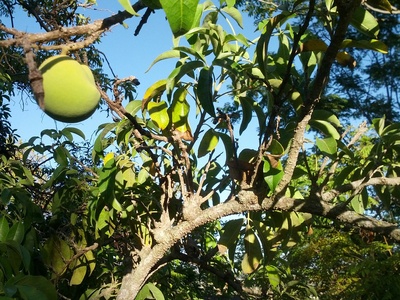
White sapote
White sapote yields smooth, creamy white flesh with sweet, custard-like flavor. Native to Mexico and Central America and grown in subtropical gardens, it’s eaten fresh or used in smoothies, ice cream, and traditional recipes.
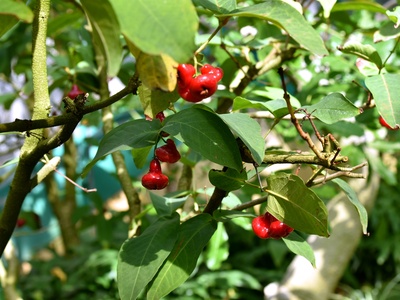
Water apple
Water apple (wax apple) is bell-shaped with crisp, watery predominantly white flesh and often pale skin. Native to Southeast Asia and popular fresh, in salads, or as a cooling snack in tropical markets and home gardens.
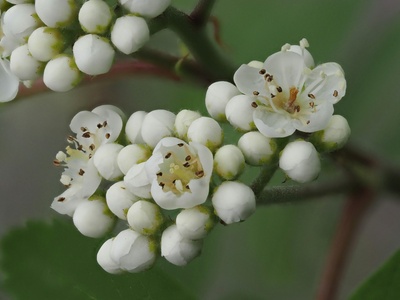
White mulberry
White mulberry produces sweet, soft berries that are often white to pale pink. Native to China and grown widely, they’re eaten fresh, dried, or used in jams and desserts; popular in home gardens and traditional cuisines.
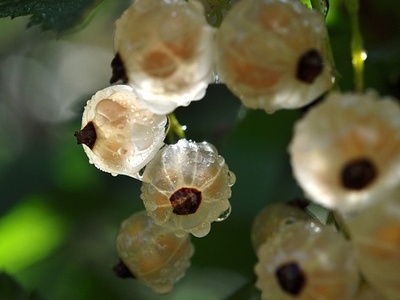
White currant
White currants are translucent white berries with tart-sweet flavor, used fresh, in jams, jellies, and sauces. Native to Europe and common in temperate gardens, they’re related to red currants but prized for milder, elegant taste.
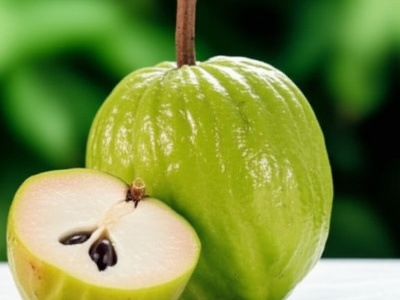
Star apple (white pulp)
White-pulp star apple has soft, milky white interior arranged in star-like segments under a thin skin. Grown in Caribbean and tropical Americas, it’s eaten fresh or chilled for dessert with sweet, subtly floral flavor.
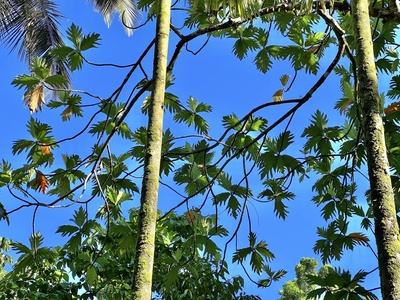
Breadfruit
Breadfruit contains starchy, pale white flesh when ripe that cooks to a potato-like texture. Central to Pacific and tropical cuisines, it’s roasted, baked, or fried and valued as a staple carbohydrate in island diets.
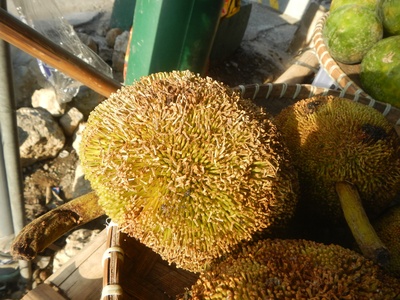
Marang
Marang bears soft, aromatic white pulp in separate segments similar to jackfruit and breadfruit. Native to Borneo and the Philippines, it’s prized fresh for its creamy sweetness and used locally in desserts and snacks.
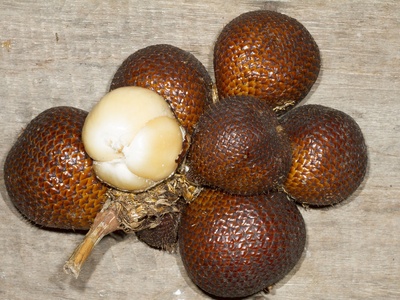
Salak (snake fruit)
Salak, or snake fruit, has crisp, predominantly white flesh beneath a scaly reddish-brown skin. Native to Indonesia and widely grown in Southeast Asia, it’s eaten fresh and praised for sweet-tart, apple-like flavor and crunchy texture.
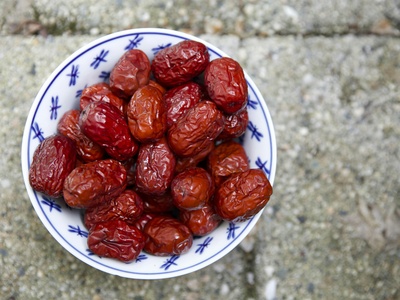
Jujube
Jujube (Chinese date) has crisp, predominantly white flesh when fresh, becoming denser and sweeter when dried. Native to China and widely cultivated, it’s eaten fresh, candied, or dried for snacks and traditional medicines.
